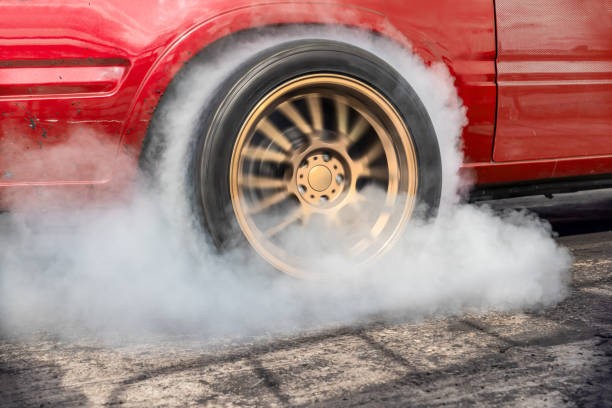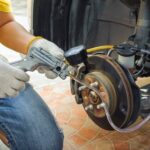Learning how to do a burnout in a front-wheel drive (FWD) car can be a thrilling experience, but it’s crucial to do it safely and correctly. This guide provides a step-by-step approach to performing a burnout in a manual transmission FWD vehicle, along with important safety precautions and considerations.
Understanding the Burnout
A burnout involves keeping your car stationary while spinning the tires, creating smoke and heat due to friction. While often associated with showing off, burnouts originally served to warm up tires before a race, improving grip by softening the rubber and cleaning off debris. This technique requires the engine’s power to overcome the friction between the tires and the road, while the brakes prevent the car from moving forward. The intense friction generates significant heat, potentially reaching over 204 degrees Celsius.
How to Perform a Burnout in a Manual FWD Car
Before attempting a burnout, prioritize safety and preparation:
- Choose a Safe Location: Find a spacious, open area free of obstacles and pedestrians. Ensure ample space ahead in case of brake failure. Never attempt burnouts on public roads.
- Vehicle Inspection: Check your tires for wear and tear. Worn tires are more prone to blowouts during a burnout. Ensure your car’s traction control and stability control are completely disabled.
- Safety First: Always wear your seatbelt.
Step-by-Step Guide:
- Engage the Parking Brake: This prevents the car from rolling forward.
- First Gear and Clutch: Shift into first gear and fully depress the clutch pedal.
- Rev the Engine: Increase the engine RPM to 3,000-4,000, adjusting based on your vehicle’s specifications.
- Release the Clutch: Quickly release the clutch pedal while maintaining a consistent accelerator input. This will cause the front wheels to spin.
- Control the Throttle: Modulate the accelerator to control the intensity of the burnout. Avoid exceeding the engine’s redline.
- End the Burnout: Gradually decrease the throttle, release the parking brake, and allow the tires to cool down before driving.
The Risks of Burnouts
Burnouts, while exciting, can significantly damage your vehicle:
- Tire Wear: Burnouts drastically accelerate tire wear. A single burnout can equate to hundreds of miles of regular driving, shortening tire lifespan and increasing the risk of blowouts.
- Brake Damage: Holding the brakes during a burnout generates extreme heat, potentially reducing brake effectiveness and causing overheating.
- Transmission Strain: Burnouts can strain the transmission, especially in automatic vehicles. Avoid sudden gear changes at high RPM.
- Axle and Clutch Damage: Improperly executed burnouts can break the axle or damage the clutch.
- Engine Damage: Sustained high RPM operation during a burnout can harm the engine.
Burnouts are best left to professionals in controlled environments. For the average driver, the risks of damage and potential danger outweigh the momentary thrill. Regular driving and proper vehicle maintenance are crucial for ensuring the longevity and safety of your car.



